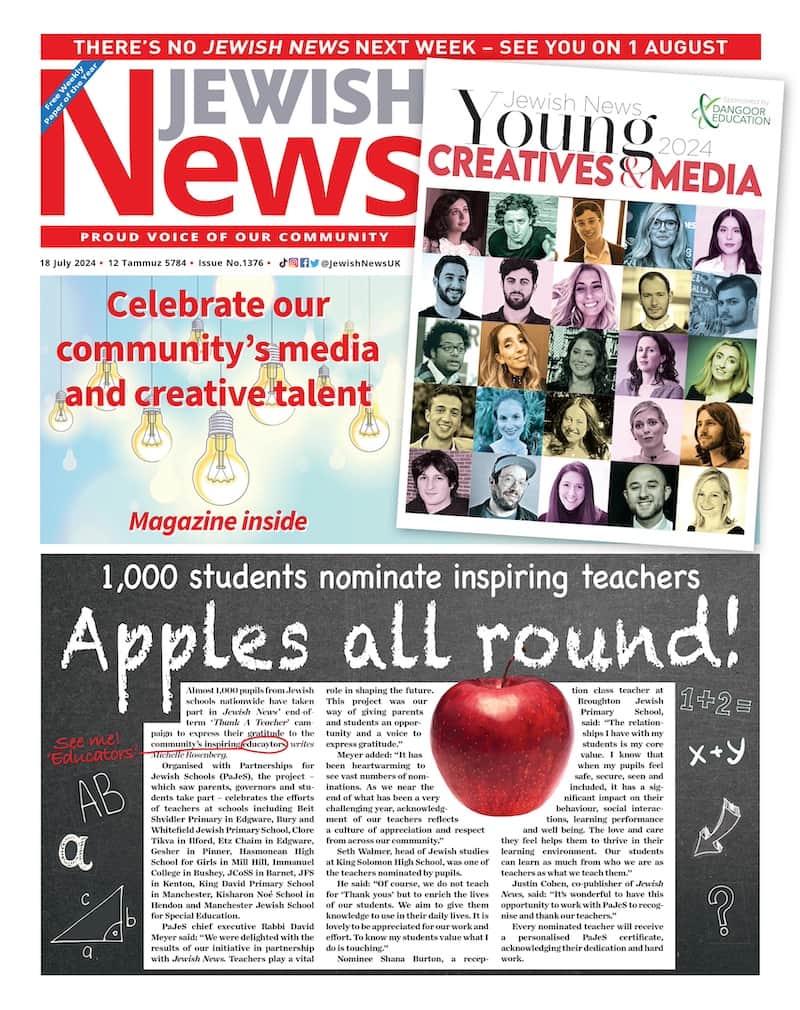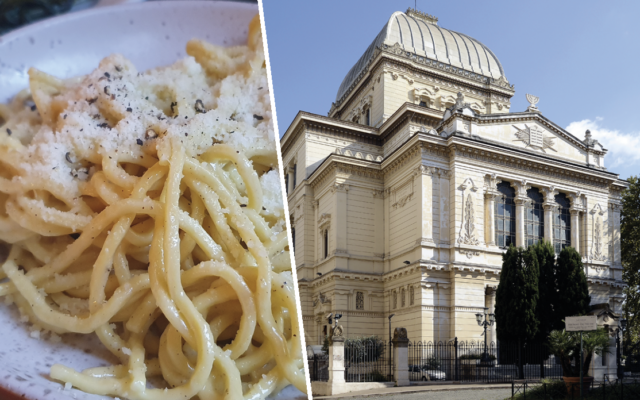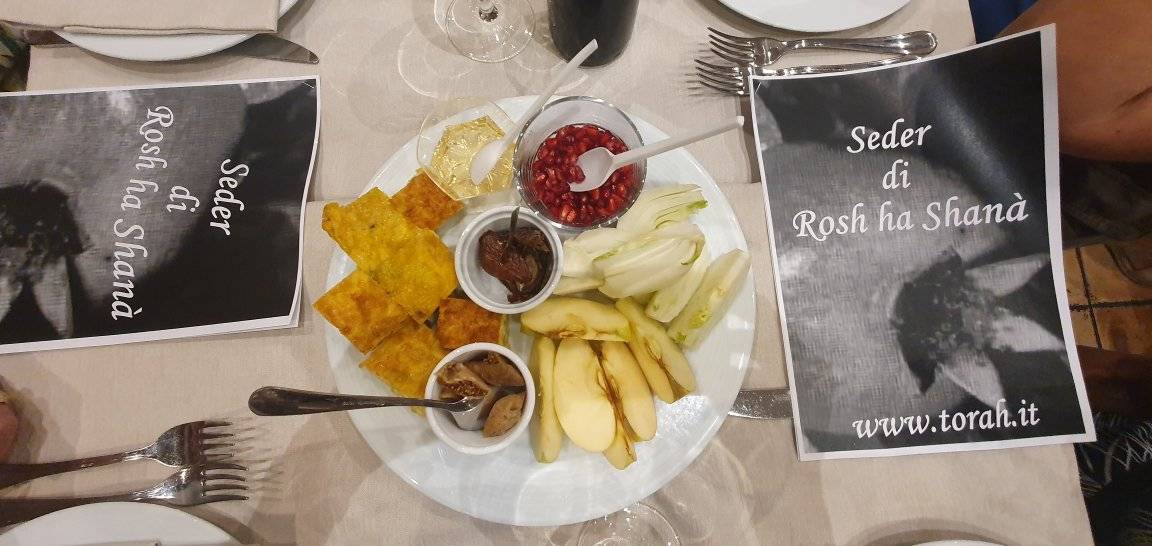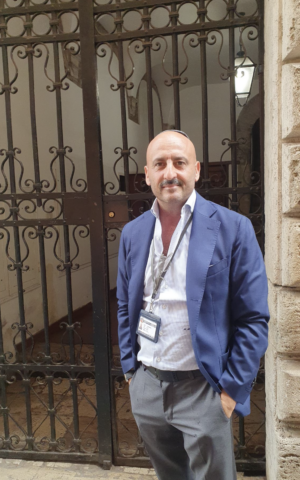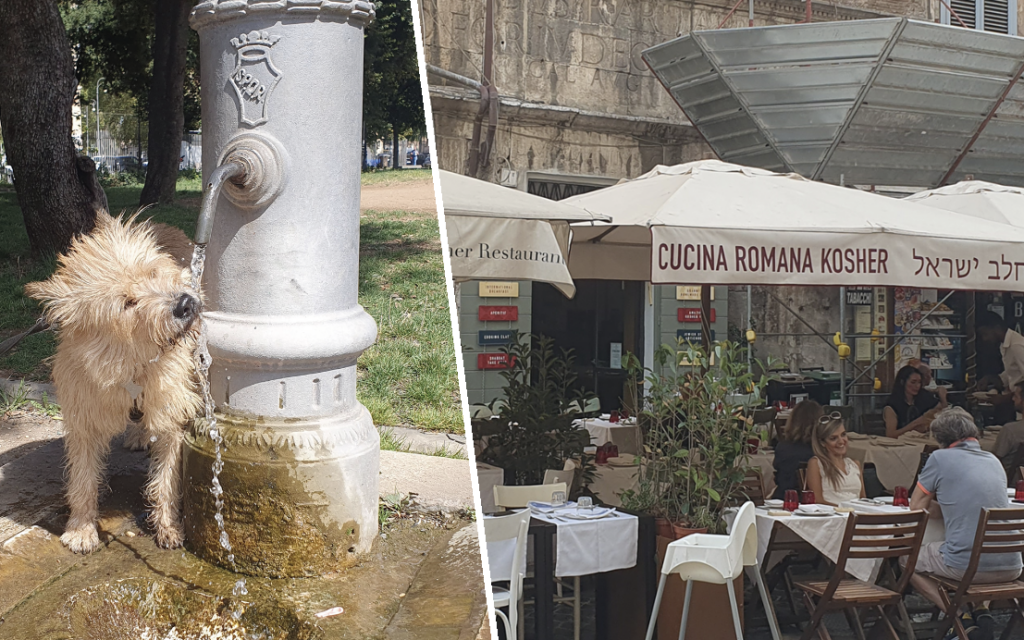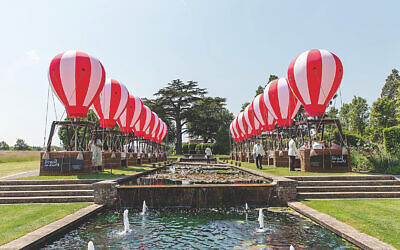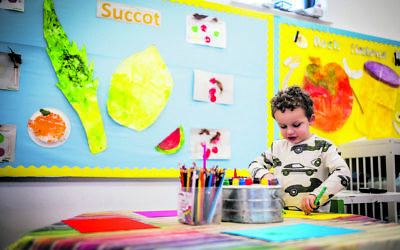Eat, pray, learn: trip to Jewish Rome includes a distinctive seder and an expert guide
From street food in the ghetto to fascinating green spaces and a historic synagogue, the city overflows with interesting things to see and to nosh
In Rome for a holiday that incorporated a two-week Italian language course, I also enjoyed learning about the country’s Jews and their traditions. After a stimulating morning in the classroom, I would go and explore the city.
I knew the quality of the classes would be the foundation of a successful trip and was thrilled to have discovered a rather well-kept secret in Scudit (Scuola d’Italiano). Directed by Roberto Tartaglione, who founded it more than 20 years ago, it has a no-frills approach that suited me perfectly. I would set out with purpose every morning for the 20-minute walk there (Scudit had helped me to find accommodation) and with only three students in my class, and a wonderful teacher in Eugenia, there was plenty of opportunity to speak and ask questions.
By 1pm, my head bubbling with new words and idioms, I would seek some pizza al taglio (‘by weight’), a great way to enjoy slices of two or three different pizzas at one meal.
My first afternoon was spent at the Great Synagogue. With a huge, square dome and richly decorated interior, its completion in 1904 symbolised the freedom of Rome’s Jews after 300 years in the ghetto. The museum in its basement tells the story of the community from the second century BCE, which has grown through immigration from Spain and Portugal and, more recently, from Libya. With more than 2,000 years of history to get through I sought help from the engaging and knowledgeable Dr Marco Misano, a Vatican-licensed guide as well as a graduate of the Rome Yeshiva. He offers tours in either English or Hebrew but not in his native Italian, having developed a stammer as a child after being caught up in the terrorist attack on the synagogue in 1982. In English he was completely fluent, very engaging and thoroughly recommended (“There are three rules for tour guides, never mention politics, religion or sex,” he told me. “I break all three”.)
This was autumn and a chance to experience my first Rosh Hashanah seder. For this distinctive Italian tradition, apples and honey are joined on the table by pomegranates, fennel, dates and egg, all of which represent, through plenty of creative Hebrew wordplay, our hopes and wishes for the coming 12 months. Ninety members and visitors at the city’s progressive community Beth Hillel, which was celebrating its 10th anniversary, filled a room at a hotel for a service in Hebrew, Italian and English before feasting at a nearby restaurant.
Temperatures for September were unusually high, which was an opportunity to explore Rome’s parks. I spent a long afternoon at the wonderful Villa Borghese Gardens in the north. My trip was a piedi but you could equally well rent a bike or even a tandem. From mid-afternoon locals and tourists alike began to gather at the terrace overlooking Piazza del Popolo, which is where to be at sunset.
My favourite outdoor space, and the biggest public park in Rome, was Villa Doria Pamphili, in Gianicolo, to the west of the city centre and a 15-minute climb from Trastevere. This is where families go for a day out and there is scarcely a tourist in sight. The terrace of the nearby Piazzale Garibaldi gave fabulous views of the city. I also enjoyed an afternoon at the vast Parco della Caffarella, close to the old Appian Way in the south. All these wonderful green spaces – and there are many more – can be reached easily by bus or Metro.
Getting about almost exclusively on foot required extra fuel, and the ghetto’s main street, Via del Portico d’Ottavia, next to the Great Synagogue, is where to experience the cuisine seen as the most authentically Roman. Tourists, Jewish and non-Jewish alike, fill the seats at the many restaurants, enjoying dishes such as Carciofi alla Giudia (Jewish-style artichokes), Fiori di Zucca (fried courgette flowers) and the street food staple, supplì (deep-fried rice balls}.
For a more formal meal, one of my finds was the Taverna dei Quaranta, round the corner from the Piazza del Colosseo but a world away from the crowds and the kitsch. It serves delicious Roman dishes in large portions in a stylish, well-lit space, with tables outside if you prefer. I had delicious Tonnarelli Cacio e Pepe (pasta with cheese and black pepper).
My search for local colour also took me to Largo Febo, a tiny, picturesque square a minute’s walk from Piazza Navona. The setting for a scene from the 2010 film Eat, Pray, Love, the piazza is the weekly meeting place for an outdoor chess group, and its Santa Lucia Ristorante is a peaceful place to stop for a drink or a meal.
For visitors, the legacy of ancient Rome and the city’s medieval and Renaissance treasures are always breathtaking but so are its green spaces, I discovered. Among the hopes and wishes at the Rosh Hashanah seder, one of mine was to return to Rome before too long.
Marco Misano: info@romanjews.com, www.RomanJews.com
Scudit: info@scudit.net, scudit.net

Thank you for helping to make Jewish News the leading source of news and opinion for the UK Jewish community. Today we're asking for your invaluable help to continue putting our community first in everything we do.
For as little as £5 a month you can help sustain the vital work we do in celebrating and standing up for Jewish life in Britain.
Jewish News holds our community together and keeps us connected. Like a synagogue, it’s where people turn to feel part of something bigger. It also proudly shows the rest of Britain the vibrancy and rich culture of modern Jewish life.
You can make a quick and easy one-off or monthly contribution of £5, £10, £20 or any other sum you’re comfortable with.
100% of your donation will help us continue celebrating our community, in all its dynamic diversity...
Engaging
Being a community platform means so much more than producing a newspaper and website. One of our proudest roles is media partnering with our invaluable charities to amplify the outstanding work they do to help us all.
Celebrating
There’s no shortage of oys in the world but Jewish News takes every opportunity to celebrate the joys too, through projects like Night of Heroes, 40 Under 40 and other compelling countdowns that make the community kvell with pride.
Pioneering
In the first collaboration between media outlets from different faiths, Jewish News worked with British Muslim TV and Church Times to produce a list of young activists leading the way on interfaith understanding.
Campaigning
Royal Mail issued a stamp honouring Holocaust hero Sir Nicholas Winton after a Jewish News campaign attracted more than 100,000 backers. Jewish Newsalso produces special editions of the paper highlighting pressing issues including mental health and Holocaust remembrance.
Easy access
In an age when news is readily accessible, Jewish News provides high-quality content free online and offline, removing any financial barriers to connecting people.
Voice of our community to wider society
The Jewish News team regularly appears on TV, radio and on the pages of the national press to comment on stories about the Jewish community. Easy access to the paper on the streets of London also means Jewish News provides an invaluable window into the community for the country at large.
We hope you agree all this is worth preserving.

